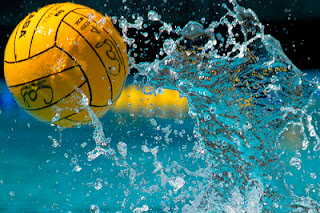While leadership is a broad, all-encompassing topic, the definitions
presented fall into a slightly different paradigm. In her book,
7 Steps to Effective Instructional Leadership, Elaine McEwan tackles this definition well, looking at the works of others while
viewing its meaning from different lenses.
To
her credit, McEwan notes how the role of the instructional leader has evolved
over the past 30 years. While earlier definitions may have focused on
administrative tasks (i.e. staffing, budgeting) the more current definitions
have much more depth.
Thomas Sergiovanni
presented some of the earlier models and has made several revisions. His first
models looked at instructional leadership as a meshing of five forces –
technical, human, educational, symbolic and cultural. Of these, the first two
are related more toward human skills while the last three are aligned more
toward leadership within the building.
One
element of the leader role that has evolved over the past few years is the role
of instructional leader as creator of a learning community. While the leader
may not be knowledgeable of all disciplines being taught, the leader should be
able to work well with teachers and staff to assure that learning is occurring
within the building. Human relations are a key piece toward achieving success.
McEwan
introduces her book by introducing the findings of more than a dozen
educational researchers and uses this meta-analysis to introduce the reader to
her seven steps of effective instructional leadership. According to McEwan, the
instructional leader needs to:
- ) Establish and implement academic standards – the effective leader sets the bar for standards. Goal setting is an important leadership tool.
- 2) Act as an instructional resource – even though the leader is not an expert on all subjects, a strong principal knows what elements are necessary for good teaching and can see when learning is occurring. This leader gives teachers and staff what they need to be effective.
- 3) Set the culture and climate – the leader needs to set the tone within the building and create an atmosphere that is conducive to learning. This can be as simple as keeping fresh paint on the walls, but it deals with facets of the human element. One example of this is the visibility of the leader within the building.
- 4) State and promote the mission and vision – while expecting the teacher to set goals, the leader also has a vision of what the school will become. This is the vision. Through daily management of the building, the mission will be accomplished.
- 5) Set high expectations – if the leader aims low, the result will be minimal. Low expectations lead to little progress. As a visionary, the successful leader sets the bar high and encourages others to aim for it. As noted in step four, expectations are high for the leader, just as it is for teachers and staff. Two-way communication is effective here as the leader seeks critiques from teachers in an effort to improve his or her abilities.
- 6) Develop teacher leaders – the quality leader inspires others to do the same. More importantly, the leader is not threatened by the idea of putting teachers in leadership positions. The manager who micromanages every detail within a school building will run the risk of burning out. Good leaders build self-efficacy among their teachers and staff and then validate their decision making capabilities by asking them to hold decision making roles (i.e. department chair, program catalyst).
- 7) Build positive relationships – just like a successful coach knows, the team works best when all of the parts are in working order. Relationships are the backbone of leadership success, whether the relationships are with staff or superiors. Part of the leader’s role is to serve as the “voice” of the building, so it’s imperative to keep a positive attitude and a cool demeanor in all dealings.
All
of these components work together and serve as only part of the role of the
instructional leader. In a recent class, our group came up with over 20 different roles and divided them into five
categories. The instructional leader’s role is diverse and can change from
minute to minute. The most important quality of an effective instructional
leader may be the ability to multi-task.











